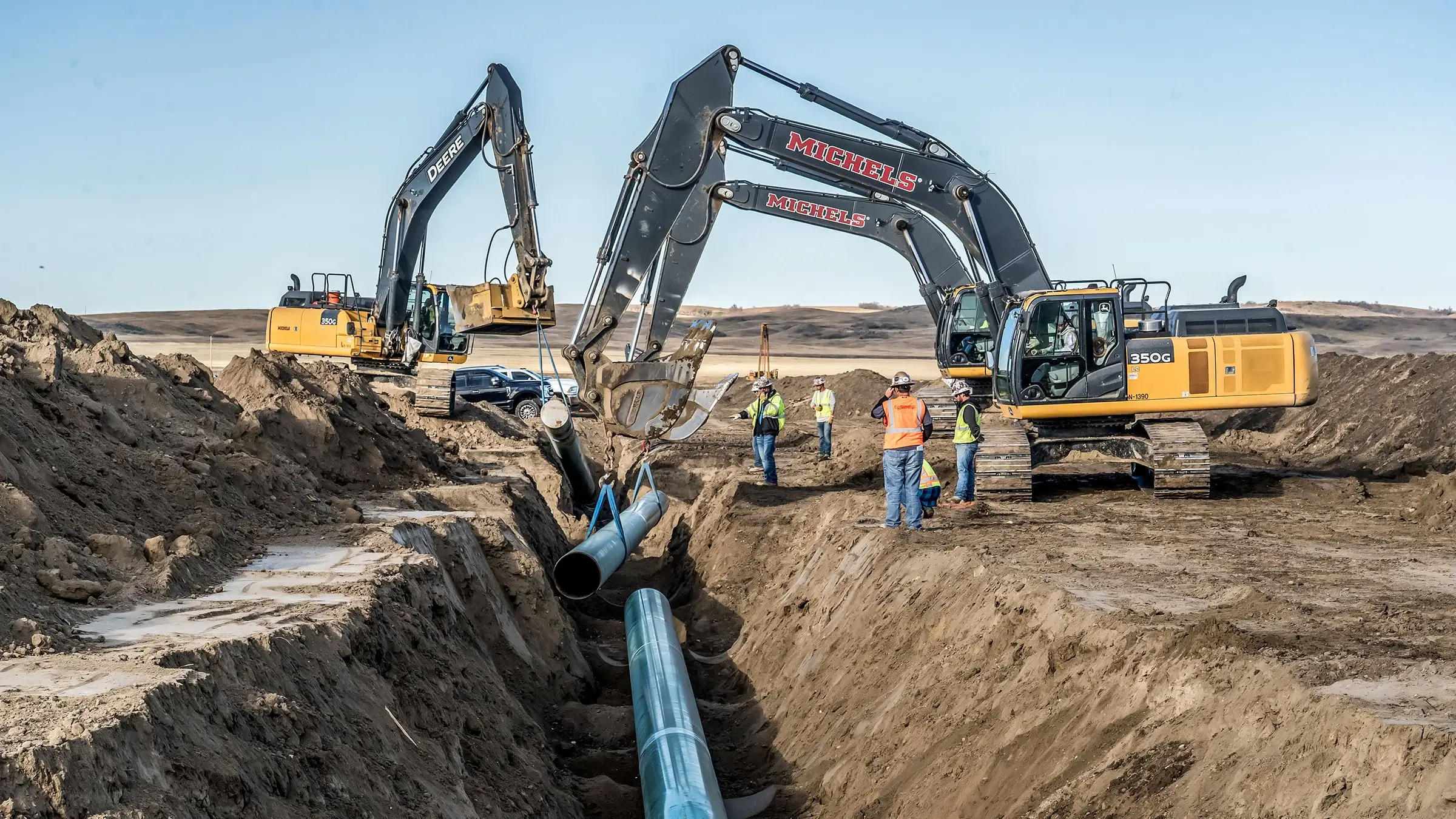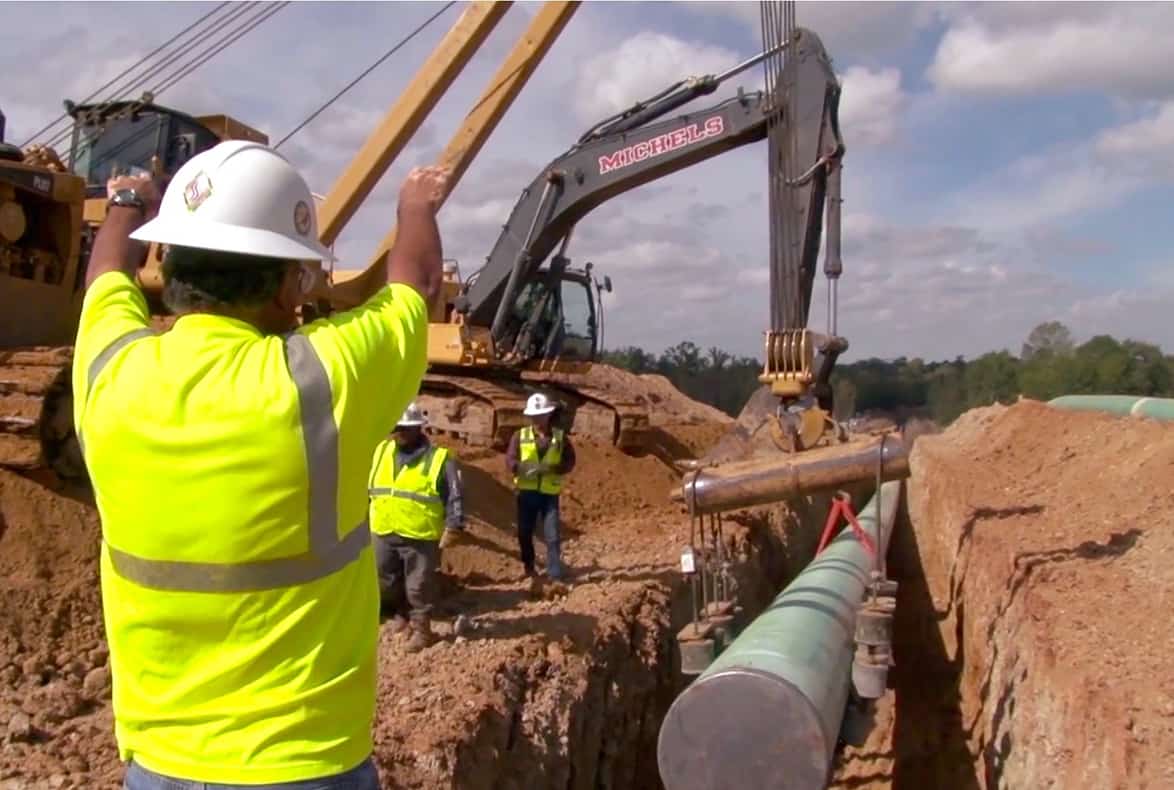Tips for Hiring the Right Provider for Creek Pipe trenching services
The Value of Pipeline Construction: Checking Out the Services Used in the Sector
Pipeline construction is a vital element of contemporary facilities. It assists in the transportation of necessary sources like oil, gas, and water. The sector incorporates different solutions, including preparation, website preparation, and installation. Each stage requires accuracy and adherence to safety and security standards. As areas depend on these systems for their incomes, recognizing the complexities of pipeline construction reveals its value and prospective challenges. What factors influence the success of these tasks?
Summary of Pipeline Construction Services
Pipeline construction services incorporate a variety of specific tasks developed to assist in the installation of pipelines for transporting different materials, consisting of oil, gas, and water. These services commonly consist of site preparation, excavation, installment of pipe segments, and backfilling. Knowledgeable labor and sophisticated equipment are essential for assuring each stage is executed with precision and safety.Safety procedures are extremely important, as these projects commonly entail collaborating with dangerous products and in tough atmospheres. Quality assurance procedures determine that the pipes fulfill sector criteria and laws. In addition, the solutions might include trenchless technology, which reduces surface disruption.Environmental considerations play a considerable function in pipeline construction, needing evaluations and reductions to shield bordering ecological communities. Overall, pipeline construction solutions are important for establishing the infrastructure required for energy and water distribution, supporting both economic growth and societal needs.
Planning and Style in Pipeline Projects
Reliable preparation and style are vital components of effective pipe tasks, ensuring that all elements are thoroughly addressed before construction starts. This stage entails detailed feasibility researches that analyze the technological, economic, and environmental elements affecting the project. Designers and designers collaborate to create detailed plans that detail the pipeline path, products, and construction approaches, lining up with regulatory needs and industry standards.Advanced software program and modeling strategies are typically used to simulate numerous situations, maximizing the style for performance and safety. Ecological influence assessments are performed to reduce possible harm to ecosystems and communities, showing a commitment to sustainable techniques. Additionally, stakeholder interaction is essential, cultivating interaction and addressing problems from influenced parties. Ultimately, efficient planning and layout established the structure for a pipe project, decreasing risks and ensuring a structured construction procedure, ultimately contributing to the total success of the procedure.
Site Preparation and Excavation
Detailed website preparation and excavation are vital steps in the pipeline construction procedure. This phase includes a detailed analysis of the land where the pipeline will certainly be mounted. Job groups carry out studies to determine soil kinds, topography, and existing energy lines to assure a secure and reliable excavation. Correct website preparation reduces ecological effect and promotes smoother construction operations.Excavation complies with, where hefty machinery is employed to get rid of dirt and rock, developing a trench that satisfies the defined depth and size for the pipeline. This process needs to abide by safety guidelines and ecological guidelines to avoid damages to bordering ecosystems.Additionally, erosion control steps are executed to support the site during and after excavation. Efficient site preparation and excavation contribute significantly to the total success of pipe projects, laying a strong structure for the succeeding phases of construction.
Pipeline Installation Techniques
Pipeline installation strategies are essential for the successful execution of facilities jobs. Two popular techniques consist of trenchless modern technology, which reduces surface interruption, and the open-cut excavation procedure, recognized for its uncomplicated technique. Each technique uses unique advantages and factors to consider depending on task requirements and ecological aspects.
Trenchless Technology Methods
While conventional approaches of pipe installment frequently involve considerable excavation, trenchless modern technology methods supply a more reliable and eco-friendly alternative. These cutting-edge strategies, such as straight directional exploration and pipeline bursting, lessen surface disruption by enabling the installment of pipelines without considerable excavating. This not only reduces the ecological influence but also greatly reduces labor and repair costs. Trenchless approaches facilitate the setup of pipes in city locations where standard excavation would certainly be impractical or harmful to existing infrastructure. Additionally, these methods can suit various dirt kinds and conditions, making them flexible remedies for pipe construction. Ultimately, trenchless technology represents a considerable advancement in the pipe sector, promoting sustainability and functional performance.

Open-Cut Excavation Refine
Open-cut excavation remains a basic strategy in pipe setup, characterized by the straight excavation of a trench to lay pipes. This approach entails eliminating dirt and various other materials to create a trench of adequate deepness and size, enabling the positioning of pipes at the needed quality. Open-cut excavation is frequently liked for its cost-effectiveness and simpleness, especially in locations with steady dirt problems. It can interfere with surface activities and needs mindful planning to manage traffic and ecological effects. Precaution need to be carried out to safeguard workers and close-by framework throughout the excavation process. Overall, while open-cut excavation may not be suitable for all surfaces, it stays a widely utilized strategy in pipeline construction.
Testing and Quality Control
Examining and quality control are vital parts in pipeline construction, making certain that installments fulfill recognized safety and security criteria and performance demands. Numerous assessment strategies and approaches are used to examine worldly top quality and adherence to regulative conformity. This systematic approach aids identify potential problems prior to they intensify, guarding the stability of the pipeline system.

Assessment Techniques and Approaches
Examination strategies and methods are necessary elements in making certain the honesty and safety and security of pipeline construction. Various techniques, consisting of aesthetic examinations, ultrasonic screening, and radiographic assessments, are utilized to identify problems and validate quality. Visual evaluations enable the identification of surface anomalies, while ultrasonic testing utilizes acoustic waves to analyze wall density and find defects internally. Radiographic assessments entail X-rays or gamma rays to produce pictures of the pipeline's structure, revealing covert problems. Furthermore, stress testing is conducted to assess the pipeline's stability under operational conditions. These techniques collectively contribute to a complete understanding of the pipeline's problem, allowing prompt upkeep choices and making certain conformity with market standards. Effective examination is essential for protecting against failures and advertising lasting functional security.
Safety Criteria Compliance
Ensuring compliance with security standards is paramount in pipeline construction, as it straight impacts the task's overall high quality and integrity. Adhering to established laws and standards assurances that construction methods reduce dangers related to pipe installation and operation. site link Creek Pipe contact. Extensive testing methods, including non-destructive testing and pressure evaluations, are critical in verifying that pipelines can stand up to the functional stress and anxieties they will certainly come across. Quality guarantee measures are additionally crucial, as they establish a framework for constant tracking and assessment throughout the construction procedure. i thought about this By focusing on safety criteria compliance, business not only protect employees and the environment however also boost the integrity of the pipeline, eventually resulting in long-lasting operational success and public count on the facilities
Material Quality Examination
Product high quality examination plays a significant role in the overall integrity of pipeline construction. This process involves extensive testing and quality control measures to ensure that materials fulfill industry requirements and specs. Numerous examinations, including tensile stamina, deterioration resistance, and weld integrity analyses, are performed to determine any prospective weak points. A comprehensive analysis not only guarantees the efficiency of the pipe however likewise improves security and toughness over its life expectancy. In addition, applying quality assurance protocols aids minimize dangers connected with product failings, which can cause expensive repairs and ecological dangers. By prioritizing material top quality assessment, business can ensure conformity with governing needs while cultivating self-confidence among stakeholders in the integrity of their pipeline systems.
Repair And Maintenance Services
Upkeep and repair service services play an essential role in the durability and performance of pipe systems. These services encompass normal examinations, repairing, and rehabilitative actions to deal with deterioration, leakages, and other issues that may occur gradually. Skilled specialists use advanced modern technologies such as ultrasonic screening and wise pigging to keep an eye on pipe integrity, ensuring that any type of prospective troubles are identified early.Additionally, upkeep programs typically consist of arranged safety nets designed to boost system dependability and lower the probability of unforeseen failings. Repair services may include the substitute have a peek at this site of broken areas, securing leakages, or utilizing trenchless innovation for very little interruption.
Environmental Compliance and Safety And Security Steps
Pipeline systems not only need recurring repair and maintenance to operate successfully yet also need to adhere to rigorous environmental conformity and safety and security measures. These regulations are important for minimizing eco-friendly influence and making sure public safety and security. Companies in the pipeline construction sector carry out complete ecological assessments before job initiation, identifying potential threats to wildlife and ecosystems.Furthermore, adherence to safety procedures protects workers and surrounding neighborhoods. This consists of regular training on emergency situation action and spill avoidance techniques.To preserve compliance, industries make use of monitoring modern technologies to spot leakages and other anomalies in real-time. Environmental monitoring strategies are typically established to outline steps for dealing with unforeseen issues throughout construction.Ultimately, stringent adherence to environmental compliance and precaution not just meets legal obligations however likewise cultivates lasting techniques within the industry, promoting a balance between facilities advancement and environmental stewardship.
Regularly Asked Inquiries
What Job Opportunities Are Available in Pipeline Construction?
Career opportunities in pipeline construction encompass roles such as project managers, designers, welders, and safety and security inspectors. These placements call for varied abilities, offering paths for growth in an essential sector of infrastructure development and energy circulation.

Just How Do Pipeline Projects Influence Citizen Communities?
Pipeline jobs considerably impact local areas by influencing financial growth, giving task opportunities, and improving framework. They might likewise elevate issues concerning environmental impacts, land usage, and potential interruptions to area cohesion and natural environments.
What Technology Is Utilized in Modern Pipeline Construction?
Modern pipe construction makes use of advanced innovations such as GIS for mapping, drones for airborne surveys, and automated welding systems to boost performance, security, and accuracy, inevitably helping with the reliable transport of sources across various terrains. Creek Pipe Texas oilfield.
Exactly How Are Pipeline Construction Prices Approximated?
Pipeline construction prices are approximated with thorough analyses of products, labor, tools, and governing needs. Variables like surface, task dimension, and ecological factors to consider likewise considerably influence the general budget plan and monetary planning for construction.
What Are the Most Significant Challenges in Pipeline Construction Projects?
The most significant challenges in pipe construction tasks include regulatory conformity, ecological worries, logistical problems, protecting funding, and taking care of labor lacks. Each element can greatly influence timelines and spending plans, complicating the overall implementation of the job.